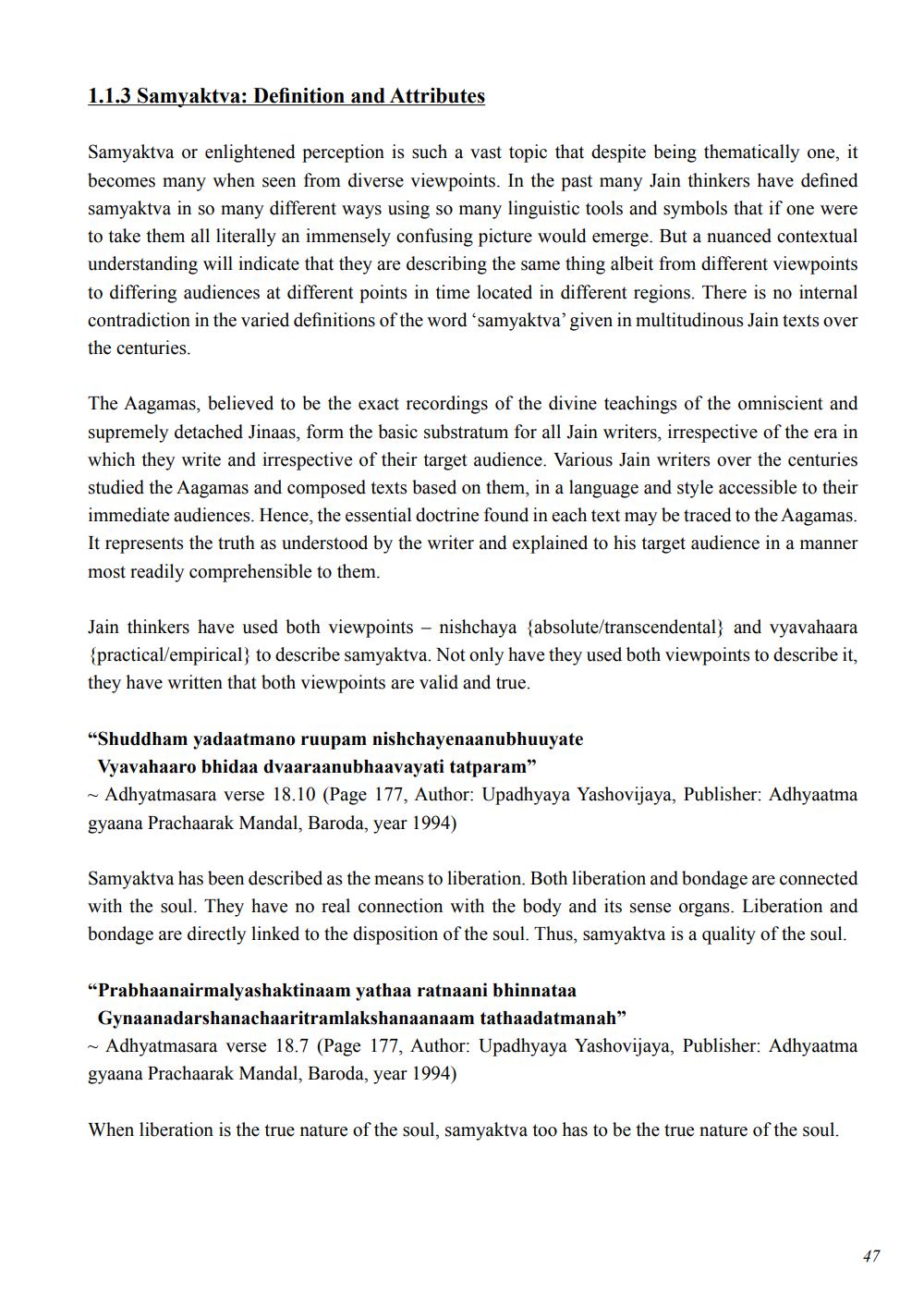________________
1.1.3 Samyaktva: Definition and Attributes
Samyaktva or enlightened perception is such a vast topic that despite being thematically one, it becomes many when seen from diverse viewpoints. In the past many Jain thinkers have defined samyaktva in so many different ways using so many linguistic tools and symbols that if one were to take them all literally an immensely confusing picture would emerge. But a nuanced contextual understanding will indicate that they are describing the same thing albeit from different viewpoints to differing audiences at different points in time located in different regions. There is no internal contradiction in the varied definitions of the word 'samyaktva' given in multitudinous Jain texts over the centuries.
The Aagamas, believed to be the exact recordings of the divine teachings of the omniscient and supremely detached Jinaas, form the basic substratum for all Jain writers, irrespective of the era in which they write and irrespective of their target audience. Various Jain writers over the centuries studied the Aagamas and composed texts based on them, in a language and style accessible to their immediate audiences. Hence, the essential doctrine found in each text may be traced to the Aagamas. It represents the truth as understood by the writer and explained to his target audience in a manner most readily comprehensible to them.
Jain thinkers have used both viewpoints - nishchaya {absolute/transcendental} and vyavahaara {practical/empirical) to describe samyaktva. Not only have they used both viewpoints to describe it, they have written that both viewpoints are valid and true.
“Shuddham yadaatmano ruupam nishchayenaanubhuuyate
Vyavahaaro bhidaa dvaaraanubhaavayati tatparam" ~ Adhyatmasara verse 18.10 (Page 177, Author: Upadhyaya Yashovijaya, Publisher: Adhyaatma gyaana Prachaarak Mandal, Baroda, year 1994)
Samyaktva has been described as the means to liberation. Both liberation and bondage are connected with the soul. They have no real connection with the body and its sense organs. Liberation and bondage are directly linked to the disposition of the soul. Thus, samyaktva is a quality of the soul.
"Prabhaanairmalyashaktinaam yathaa ratnaani bhinnataa Gynaanadarshanachaaritramlakshanaanaam tathaadatmanah” ~ Adhyatmasara verse 18.7 (Page 177, Author: Upadhyaya Yashovijaya, Publisher: Adhyaatma gyaana Prachaarak Mandal, Baroda, year 1994)
When liberation is the true nature of the soul, samyaktva too has to be the true nature of the soul.




